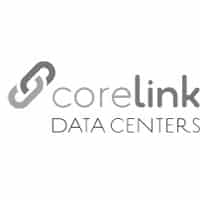 Cloud computing has become increasing popular over the past several years. It enables hosted services to be delivered over the internet, rather than physically storing information on computers. The data center is a critical part of service delivery. Cloud computing has benefits and risks.
Cloud computing has become increasing popular over the past several years. It enables hosted services to be delivered over the internet, rather than physically storing information on computers. The data center is a critical part of service delivery. Cloud computing has benefits and risks.
Service Models
There are 3 different cloud service models: IaaS, PaaS, SaaS. IaaS (Infrastructure as a service) supplies computing resources such as network capacity, storage and servers. PaaS (Platform as a service) gives users access to software and services so they can create their own software applications. SaaS (Software as a service) connects users to the cloud provider’s own software applications.
Public or Private
There are several different types of clouds. A public cloud sells service to anyone on the internet. There are a number of well-known, established companies that provide public cloud computing services. A private cloud supplies hosted services to a defined group of people through a proprietary network. Another variation is a hybrid cloud. It combines two or more public or private clouds that are separate entities but intertwined by technology. A community cloud is designed to be used by multiple organizations in support of defined community. Community clouds can be maintained by a third party and located on or off the premises. No matter the type of cloud, the goal is to supply access to straightforward, scalable computing resources and IT services.
Low capital expenses
The computing and capacity needs of organizations are constantly in a state of flux. Cloud computing can be a very cost effective way to access additional computer resources from a state of the art data center. It provides flexibility that many businesses desire. There is no upfront investment in equipment. With cloud service, the needed equipment is already available and ready to use. Businesses can rent the latest equipment, such as servers, when required, rather than having to purchase or upgrade their own servers.
It’s elastic
Another benefit of cloud computing is that it is elastic. A user has access to as much or as little service that they may need at any point in time. It is exactly like turning on a faucet when you want a drink and turning it off when finished. The ease of scalability of cloud computing eliminates concerns a customer may have about things like having to provision their own additional capacity on short notice. A cloud provider handles these issues for their customers.
Provider managed
Cloud services can be fully managed by the provider. Many businesses find this attractive because it can help lower IT operating costs. Expensive IT staff to install, maintain and monitor equipment and applications is not needed if a business is using cloud computing.
Transparency
One of the negatives of cloud computing is that services are not typically delivered with a lot of transparency. It can be difficult to know what exactly is being done and how it is executed. Cloud customers are not able to monitor availability, or do anything to resolve a service interruption or an outage. Loss of data is another concern. Even if a cloud provider states they have redundant back-up capabilities, you will not know for sure unless there is a problem. It is always a good idea for a company to back-up its own data for extra protection.
Data ownership
Cloud customers frequently don’t own their own data. There are a number of public cloud providers whose contracts contain language clearly stating any data stored is owned by the provider, not the customer. Cloud vendors believe having ownership of the data provides them more legal cover if something were to go wrong. If a vendor has access to customer data, they are also able to search and mine the data to develop more potential revenue streams.
Shared access
A potential risk of cloud computing is that involves sharing access with other users. One of the reasons the price for cloud services can be so attractive is that vendors are realizing economies of scale to drive down the cost. Multiple customers have access to the same computing resources including memory, storage and CPUs. These customers are typically totally unrelated.
Advantages of building a private cloud
It may make the most sense for a company to build its own cloud rather than rely on other options. If a company prefers to manage all its computer resources and IT operations in house, then a private cloud is a good choice. This solution can also give a company complete control over its technology. A private cloud can be an optimal way to solve an organization’s business and technology challenges. It can provide IT as a service. The results can include lower costs, increased efficiency and business innovation. A private cloud can be used for employee collaboration from any location on any device. It will also help ensure the best possible network and application security.
Things to consider when building a cloud
There are many things to consider when building a private cloud. They include infrastructure, types of applications that will be run, access methods, traffic patterns and security. When determining infrastructure, it is important to have an experienced data center partner involved in the process. This will help to ensure the quality of service. Mobile device based access has become increasingly important. Virtual desktops are another important access component. Many companies need to have traffic endpoints that are location independent. Security is always a crucial piece of cloud design. The appropriate users and devices must be able to access the needed information at the right time, while also securing the system from any attacks or breaches in security. Different types of data and traffic possess disparate levels of importance. They all must be supported across the network. There is no one size fits all private cloud model. Every organization has different priorities and needs that should be taken into account and reflected in the cloud architecture.
Cloud computing is directly influencing the future of technology. There are several service and delivery models for cloud computing. Each one has its own pros and cons. Building a private cloud may ultimately be the best option for an organization that wants to have complete control and manage everything in house.




























